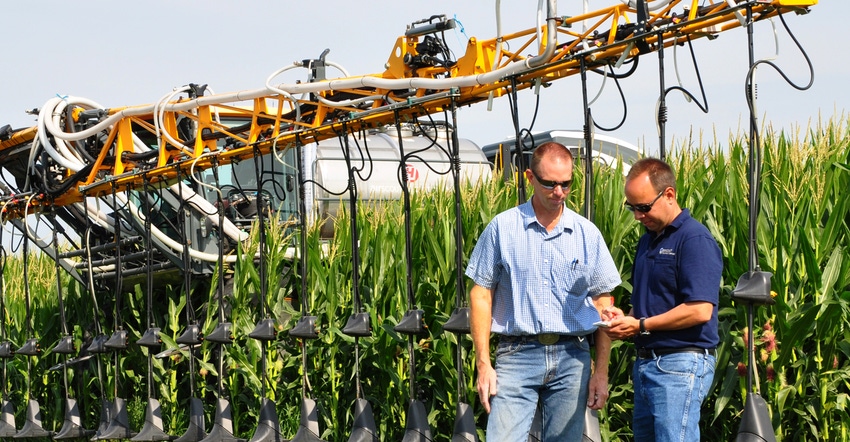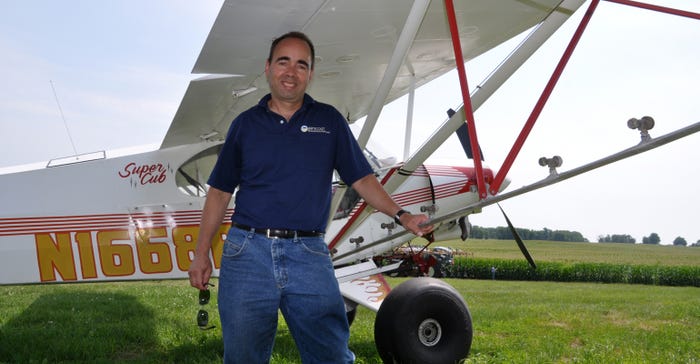
Brian and Dan Sutton have spent nearly 30 years seeking the most profitable way to manage their variable soil types in Lake County, Ind. The method they rely on heavily today to determine seeding rates and input rates is based on interpreting thermal images from airplane flights at key times. They’re confident enough that their method will work for others that they offer a service delivering thermal images for other farmers through their business, Air Scout.
“Our soils are so variable that we knew we needed to farm based on management zones,” Brian says. “We have used yield maps, and we tried NDVI and even ‘red edge’ imagery.
“We still weren’t leaning what we needed. Once we learned how to use thermal imagery coupled with our proprietary ADVI imagery, we realized we could make decisions and write prescriptions for inputs.”
Dealing with aerial imagery and flying comes naturally to Brian. He’s a commercial pilot for American Airlines in his “night job,” but still helps Dan operate the farm.
“The first image that really helps is a bare soil image,” Brian says. “It shows a lot about organic matter variation and drainage differences. We rely heavily on those images to build variable-rate seeding maps.”
Zero in on nitrogen
A thermal image of each field when corn is at the V8, or eight-leaf, growth stage is critical, Sutton says. “That helps us identify areas with the fat, healthy plants from the skinny ones. We’ve found that if we build our nitrogen program around supplying more to the most productive areas, it’s more profitable in the long run.”
They typically apply a base rate of 125 to 150 pounds of nitrogen earlier in the season, Brian says. Then around tasseling, they utilize a Hagie Air Scout, high-clearance rig with Y-drops to apply from zero to 100 pounds per acre of additional nitrogen. The prescription for the application is based on the thermal images. The “fat kids” get the highest rate, and the “skinny kids” with less potential may not receive any additional nitrogen.
 AERIAL IMAGES: Thermal-based images from aerial flights at the right time help Brian Sutton determine how much additional nitrogen to apply in which areas.
AERIAL IMAGES: Thermal-based images from aerial flights at the right time help Brian Sutton determine how much additional nitrogen to apply in which areas.

“If we need fungicide for disease control, we can apply it at the same time,” he says. “Sometimes it’s the less-productive areas that need fungicide to protect the yield potential they do have.”
If you want to try the concept on your own farm, learn more at airscout.com. The current subscription rate is $7 per acre for the entire season, and you don’t have to sign up all your acres, Brian says.
“What we want farmers to do is work with us,” he says. “We provide all the software they need. Images will usually be sent to them the morning after the flight.
“If the images just sit in a drawer, they won’t help anyone. We want farmers to contact us and work with us to help them make use of the information in their own operations.”
About the Author(s)
You May Also Like




